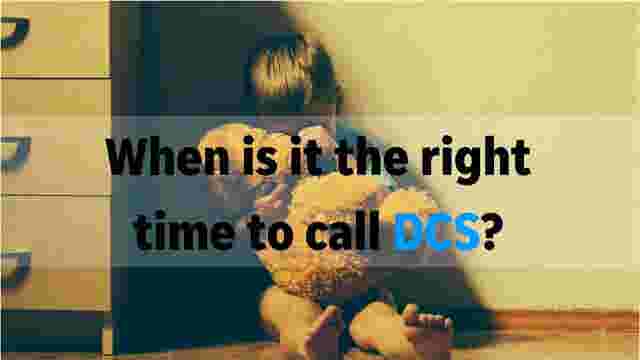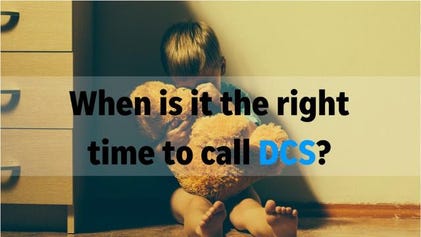Well, wonder no more!
Arizona is going to be our example for the final phase in the Month of Trafficking Tiny Humans - Adoption.
See, when an anonymous individual calls the CPS Hotline, the intake worker fills out a form and takes it to a judge to sign the removal order.
Mind you, I did not say anything about being charged, facing the unknown accuser, or anything else relevantly close to due process because that is called ex-parte, meaning you are not invited to the proceeding.
Yes, that is correct, the courts hold a petite trial, meaning the only people in the court room are the judge, the CPS worker and probably the clerk, that is if the orders are not rubber stamped like they do in Michigan, but I digress because we are dealing with Arizona.
If a state is snatching this many kids, something tells me the state is not doing a very good job when it comes to quality of life and its elected officials probably do not care because the money to be made off these poor tiny humans funds their political campaigns.
Arizona Computer Glitches Bust Child Human Trafficking & Fraud
Oh, and I forgot.
#perkinscoiesucks
Happy National Adoption Month!
Child welfare officials took 1,900 kids in 4 months, but that's not the whole picture
Over the last four months, child-welfare workers removed more than 1,900 Arizona children from their family homes with a judge's OK, according to data obtained by The Arizona Republic.
But that doesn't give the full picture of child removals that lawmakers wanted when they adopted a new warrant process as a check on the Department of Child Safety's power to remove a child from her parents.
Most notably, the agency doesn't reveal how many Arizona children were taken without judicial approval, which the law allows in dire circumstances. That's because DCS isn't tracking emergency removals even though the intent of the new warrant law was to provide more transparency on what is arguably one of the most intrusive actions a government can take on its citizens.
The Republic obtained data from the Department of Child Safety on removals from July 1, when the new law took effect, to October 31.
Previously, child-welfare workers alone made the call to remove a child. But under the new law, DCS case investigators must file removal requests electronically to Maricopa County's initial appearance court, where a judge or commissioner decides whether to issue an order. The court operates 24/7 and handles requests from investigators in all 15 counties.
The data shows that 93 percent of the time requests for a court order to remove a child have been granted. That accounts for the 1,938 children who were removed between July 1 and Oct. 31.
Requests involving 50 children were denied, but it's unclear what DCS did in those cases since the investigator apparently thought the child needed to be immediately separated from his home.
DCS can't quantify how many children were removed from their homes due to "exigent circumstances," the only situation in which an exception to a court order is allowed.
"I wish it wasn't this difficult to get this kind of reporting when it has such a dire impact on families," said Rep. Kelly Townsend, R-Mesa, an early advocate for court orders. She said she is working on legislation that would require regular reporting on the agency's removal process.

When should you call DCS if you think a child is in danger?
Arizona’s child-welfare agency says to call the child-abuse hotline if you reasonably believe that a child has been “abused, neglected, exploited or abandoned.”
WOCHIT
Lawsuits, court decision propel action
The Arizona Legislature debated the need for a so-called warrant system for several years. A 2016 9th U.S. Circuit Court of Appeals ruling that removing a child without court approval violates parents' constitutional rights was a key motivator. Ongoing lawsuits against DCS arguing that the state's practice of taking children without getting a warrant is unconstitutional further propelled action.
A bill requiring court approval passed in 2017, and earlier this year lawmakers defined the circumstances in which DCS could remove children without a court order. They outlined two narrow categories when this could happen:
- When the situation is so urgent there is not time to file a request with the court
- When there is probable cause that a child has been sexually or physically abused.
But more than four months into the new process, DCS says it can't isolate cases where children have been removed due to emergency circumstances. At least, not without combing through more than 3,000 individual case files.
The agency every month reports the total number of children it removes.
From July to October, that totaled 3,175 removals. But that figure combines a variety of cases, DCS public-information officer Darren DaRonco said. Besides removals due to exigent circumstances, the number reflects cases in which parents voluntarily surrender their children; where the court (not DCS) generates the removal request; and where the child is also involved with the juvenile-justice system.
"It's not as easy as subtracting the numbers," DaRonco said.
What is easy is the reason DCS doesn't seek a court order: "There isn’t enough time to get in front of a judge before harm will come to a child," the agency said in a statement. This is one of the exceptions outlined in state law.
Lawmakers want more details
Legislators said the reported numbers are helpful, but some want to see more detail.
Rep. Reginald Bolding, D-Laveen, said a big issue in his district are complaints that DCS "arbitrarily" removes kids based more on socioeconomic status than any real danger.
"The transparency aspect is probably the most important aspect when you're removing children from their home," he said. "Historically, DCS has had issues with that."
Rep. John Allen was closely involved in the creation of the court-order law. He said the fact that DCS can show that 93 percent of its removal requests were approved is a key reason for the law.
"I want the public to understand we're making strides to make the system better," said Allen, R-Scottsdale.
What the numbers don't tell
Attorney Suzanne Nicholls contends the statistics don't tell the whole story on child removals.
She said she's seen DCS cases where the children were removed from their home using "present danger" plans. These plans are part of the safety protocol DCS has been using since last year under a policy intended to keep families together in as many cases as possible.
One of the options is to send children to live with "a responsible adult in the family network" who can care for them for up to two weeks. This option, in her eyes, is a back-door way to remove a child without court approval.
The plain fact that a child is not living with one or both parents is evidence of a removal, she said.
"Right now, we have no idea how many children are out of their homes," she said.
When a removal is not a removal
DCS sees it differently.
It views present-danger plans as a way to improve a family situation before things deteriorate to the point case managers feel a court order is needed to remove the child. That can entail having the child live apart from the parent or parents, but the agency doesn't consider that a removal.
Nor, apparently, do some of the judges who have denied removal requests. Judges have turned down removal requests, saying they want the present-danger plan to expire (they last no longer than 14 days) before deciding on a removal.
Allen said he views temporary placements with a relative as a breather for parents to settle things down in their household. In his eyes, it's not a technical removal.
"It's not a direct intervention of the state," he added.
Lessons learned
DCS said it studied the cases where the court has denied removal requests and found that usually happens when the child has been left with a relative, ending the "impending danger" that is key to deciding if a removal is needed.
In other instances, denials happened because the DCS investigator did not include information on both parents.
So far, DCS said, the new law is meeting its expectations: It has provided a backstop on investigators' decisions to remove a child; it has helped protect parental rights; and it has saved children from the trauma of being unnecessarily removed from their parents.
Voting is beautiful, be beautiful ~ vote.©

No comments:
Post a Comment